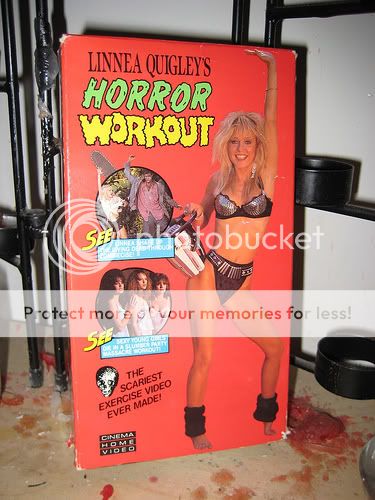(This post originally appeared at The Comics Reporter. Thanks again, Tom.)
1. I’d been to SPX only once before, in 2003, back when it was at its old “indie comics sleepaway camp” location in the Holiday Inn in Bethesda proper. At the time I was not super-crazy about the experience. This, on the other hand, was one of the best cons I’ve ever been to.
There are many reasons for that (you may have already seen one of them) but I have to think that the venue change played a big part. Now every single table and booth is all in one giant high-ceilinged room, which makes the convention floor feel more like an energetic marketplace of art and ideas and less like an estate sale, as one SPX staffer described the vibe at the old venue. There was also convenient access to a patio on which to sit and chill and smoke and talk on your cell and read, and a pretty terrific bar/restaurant. And to the extent that anything is convenient via the Metro, with its insanely vertiginous escalators and absurdly arcane payment system that I’m pretty sure involves the use of an abacus, the old downtown Bethesda restaurant area is still within easy reach.
2. I see that one of my complaints about SPX 2003 was a lack of compelling debuts. Boy, was that ever not the case here. I feel that there have been years within even my comparatively brief comics-reading memory where we’d have been lucky to see as many world-class comics appear within 12 months as went on sale for the first time at this one show, even with The full list (scroll down to the nominees for Outstanding Debut) isn’t even a full list when you factor in mini-comics and the like.
3. And holy moley, the mini-comics! In terms of their craft as objects, Jeffrey Brown observed that the number of minis with color, silk-screened, die-cut, or hand-sewn covers actually appeared to be greater than the black-and-white jobs. There certainly were some gorgeous and compelling comics available; it would have been quite easy to wipe out your spending budget at Shawn Cheng, Sara Edward-Corbett and Matt Wiegle‘s Partyka and Eleanor Davis and Drew Weing’s Little House tables alone. Trust me on that one.
4. Related: Most times I’ve been to a small-press convention, I’ve been excited to pick up new work from familiar artists but wary of diving into uncharted waters, and rarely have I seen previously unknown work capable of beguiling me into doing so. But there was an embarrassment of riches at SPX from artists I’d never heard of–and I like to think I’m a pretty savvy guy when it comes to these things. My poison included Matt Furie’s hilarious Boy’s Club from Buenaventura Press; Andres Vera Martinez’s Tejano Ghost Stories, drawn and designed in beautiful black and white; and the minicomics anthologies of the Closed Caption Comics collective, a group clearly influenced by that notorious cultural dead end Fort Thunder that had nearly everyone I talked to saying “Whoa, did you see those kids next to the Bodega table?” There were at least that many over again on which I could gladly have splurged.
5. Speaking of Bodega and Buenaventura, along with PictureBox Inc. they formed a new trifecta of alternative comics publishing to sit alongside Fantagraphics, Drawn & Quarterly, and Top Shelf. Watching not one, not two, but three companies produce and sell high-quality avant garde work centered on alumni of the Fort Thunder, Paper Rodeo, and Highwater scenes is astonishing and invigorating.
6. Top Shelf has an exceptionally solid crop of new-ish releases and creators right now, with strong and interesting titles from Matt Kindt, Jeff Lemire, and Andy Hartzell, all of whom were on hand.
7. Oni was a visible and ebullient presence at the show as well, the most notable comparatively mainstream outlet there. They seem to have really internalized what made Scott Pilgrim connect and are continuing to deliver what may be the first organic wave of manga-influenced but not manga-derivative work we’ve seen, from their comfy digest formats on down: Wet Moon, Last Call, Black Metal and so on.
8. Where were NBM and SLG? I didn’t just miss them, did I?
9. AdHouse could have gotten away with charging $50 for their latest James Jean Process Recess art collection at this show, which you could also have said for PulpHope at MoCCA. They’re mightily impressive books. And if they subsidize Skyscrapers of the Midwest, even better.
10. Fantagraphics sold out of Paul Karasik’s I Shall Destroy All the Civilized Planets Fletcher Hanks book again. Everyone loves this thing, from Comics Comics editor Dan Nadel to former Wizard Editor in Chief Pat McCallum. (You see what I mean? Everyone!)
11. The roster of creators on hand was extremely impressive, even just within the official guests of honor and panelist slots. As Heidi MacDonald pointed out to me, the line-up ran the gamut from Jeff Smith and Matt Wagner to Kim Dietch and Bill Griffith to Gilbert Hernandez to Nicholas Gurewitch to C.F., an accomplishment in itself. Moreover, the people responsible for fully six of my top 10 releases of the year — Anders Nilsen, Kevin Huizenga, John Hankiewicz, Josh Cotter, Tom Neely, Gilbert Hernandez — were all present at the show. Had Nick Bertozzi made it (did he?), it would have been seven. Brian Ralph, Paul Karasik, Jeffrey Brown, and Nick Gurewitch would probably be in the top 15, too.
12. Speaking of Gurewitch, his tiny table could easily have been replaced by a giant throne made of candy and gold, such is his draw. I expect that whole webcomics corner of the floor to metastasize into a presence to rival any of the big altcomix publishers, and I’m a little surprised that hadn’t happened already.
13. In terms of the lines for their signings, Bone‘s Jeff Smith and Exit Wounds‘ Rutu Modan were the belles of the ball. This would seem to give lie to Heidi’s notion that storytelling isn’t valued by the snobs anymore.
14. The lines appeared to be shorter for the veterans like Beto and Deitch, but I’d guess that’s because they each signed for herculean stretches of time between the two days of the show. Please think about how awesome it is that you enjoy an art form where that happens. You can’t exactly count on having four hours to walk up and chat with, say, Bernard Sumner and Grace Slick at the same table in this world.
15. Speaking of the two days of the show, why are they Friday and Saturday? I asked around and found out that Sunday used to be a big hang-out day for the whole indie comics community (somewhere Gary Groth just spit on the floor and made the sign of the evil eye) involving a pig roast and a softball game against Diamond or something, but neither of these things happens anymore. Having 50% of your two-day show on a workday prevents people who would come from coming, period. This happened to my wife, and it cost all my former co-workers a day of show-going. I also heard complaints from creators that Friday’s late hours really screwed them up in terms of meals and sleep. Do a proper Saturday/Sunday show, for pete’s sake.
16. There was a panel on the State of Comics Criticism and I wrote about it here.
17. Much of crowd at this show was very attractive, a point that should be made often and loudly. This extends to many of the creators as well, both male and female, and not just in comparison to what most people in comics look like either. I don’t know how else to put this — whatever your preference, there was some grade-A tail on display, in extremely close proximity to social lubricants and hotel rooms, and you crazy kids should be out there ticklin’ and slappin’ and makin’ it happen.
18. I even enjoyed the five or so hours it took me to drive down from Long Island and back, despite the lack of vegetarian meal options at rest stops. I timed my departure and arrival to avoid the New York and Beltway rush hours and listened to a half dozen albums I haven’t had a chance to really dig into since I stopped commuting and lost my dedicated music-listening time. The new Radiohead‘s pretty good, huh? Best since Kid A. “All I Need” — holy moses.




